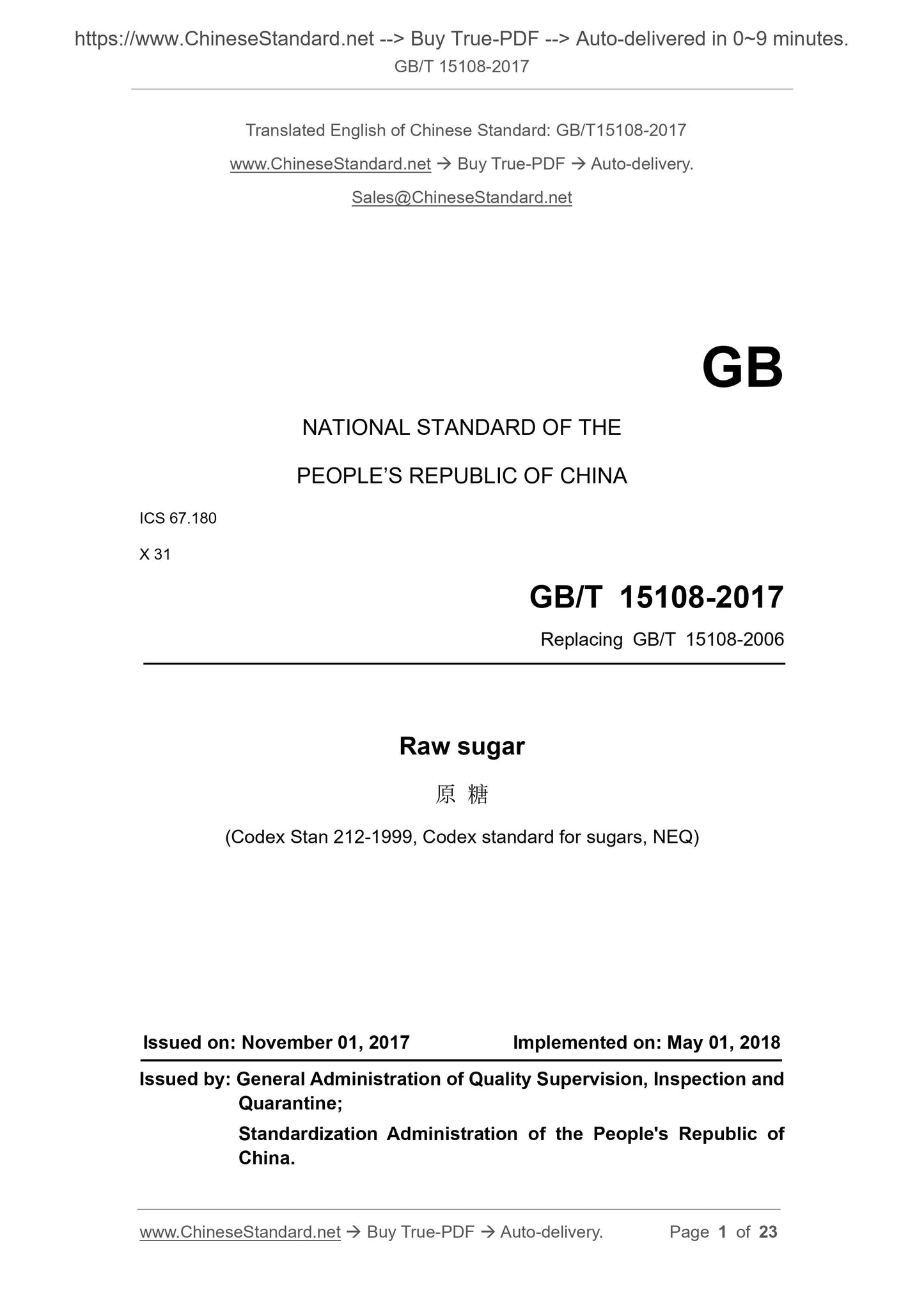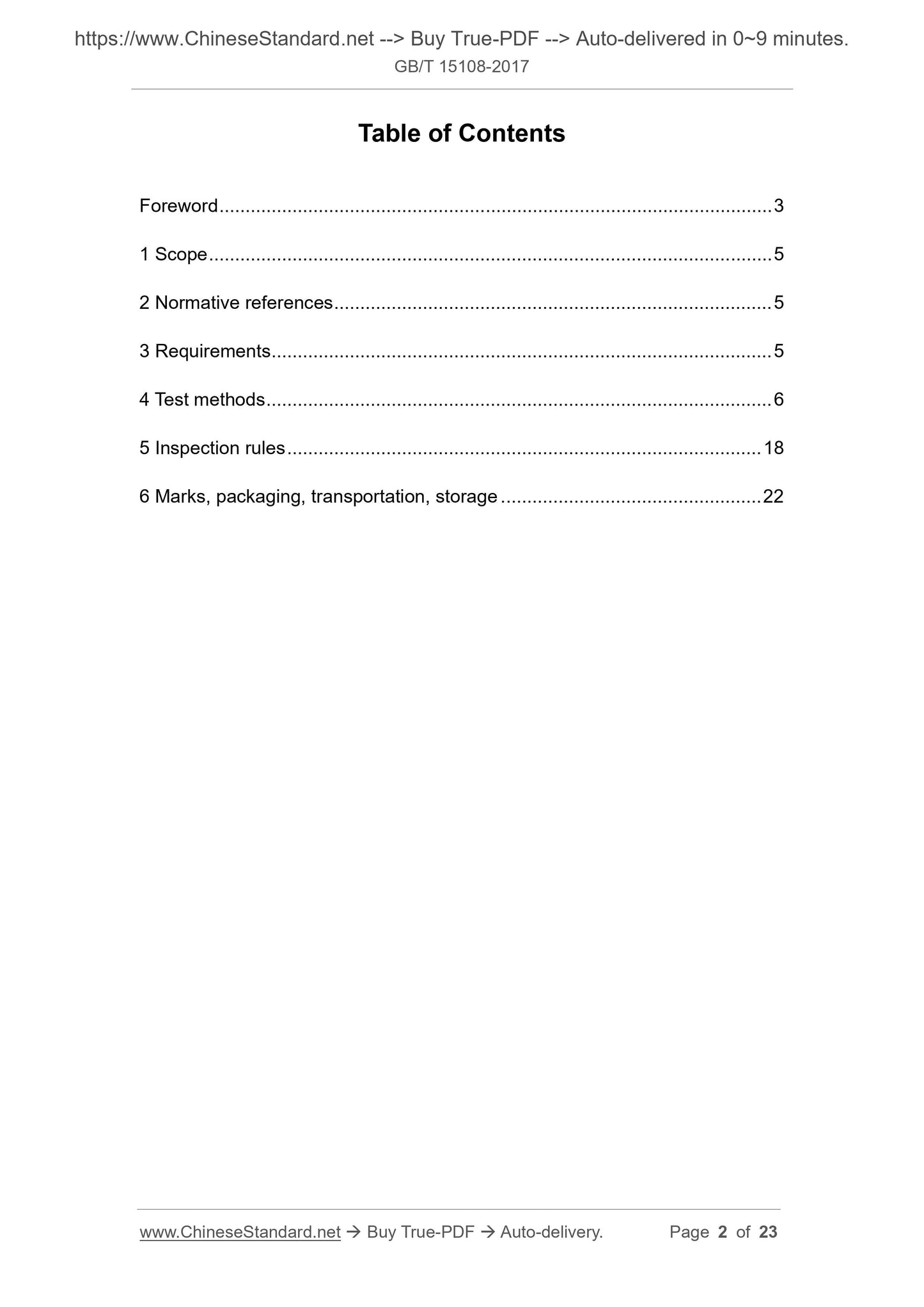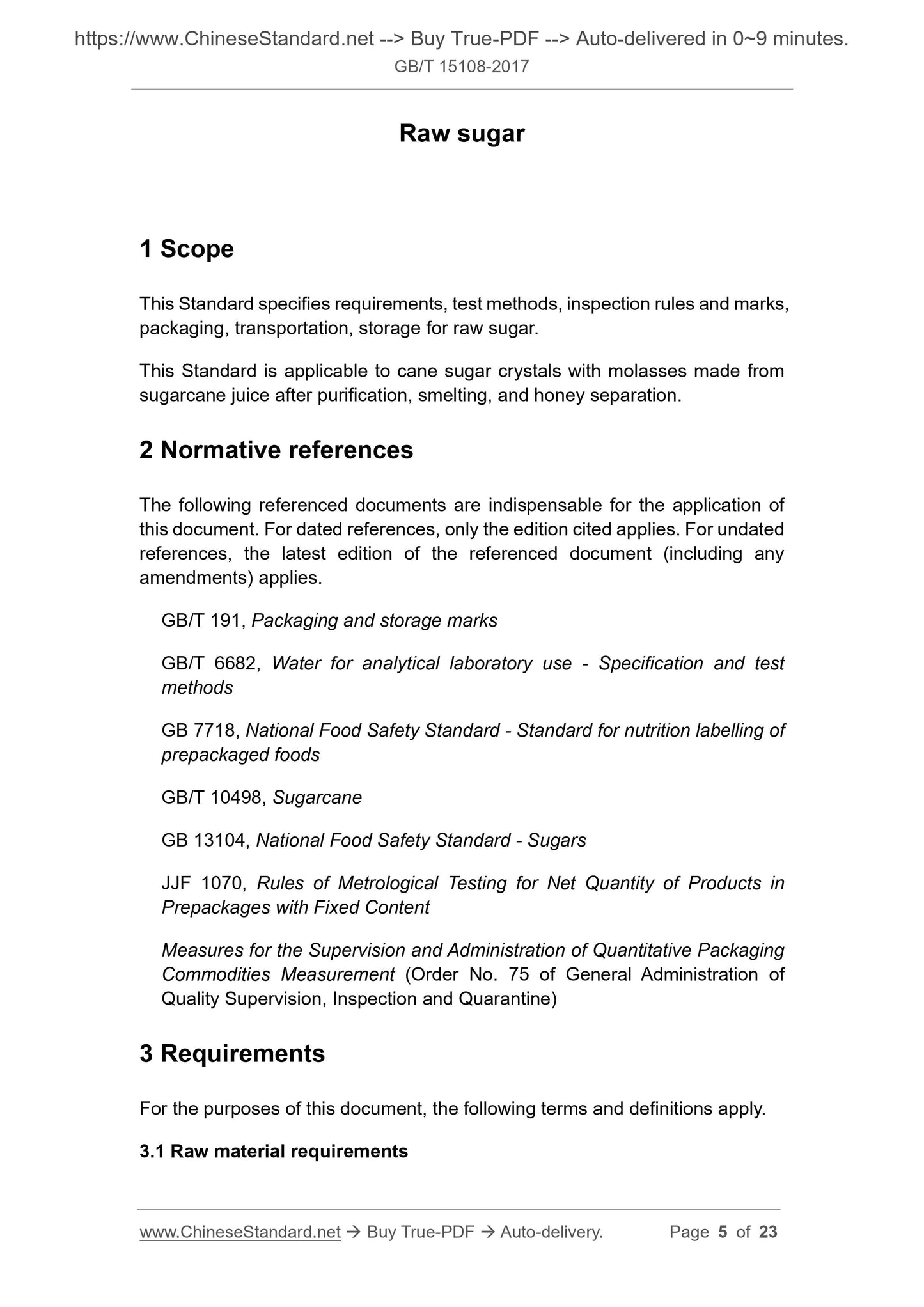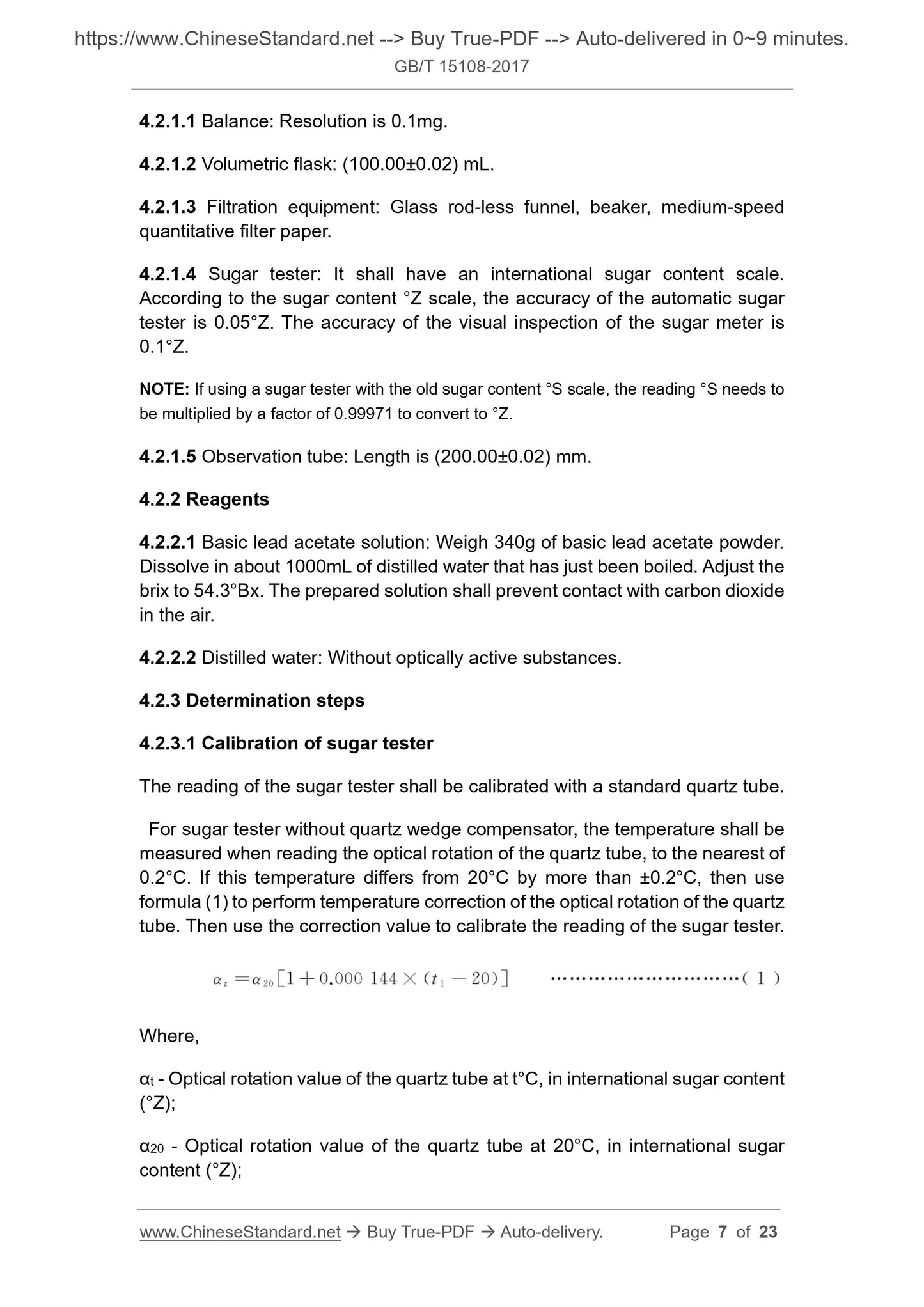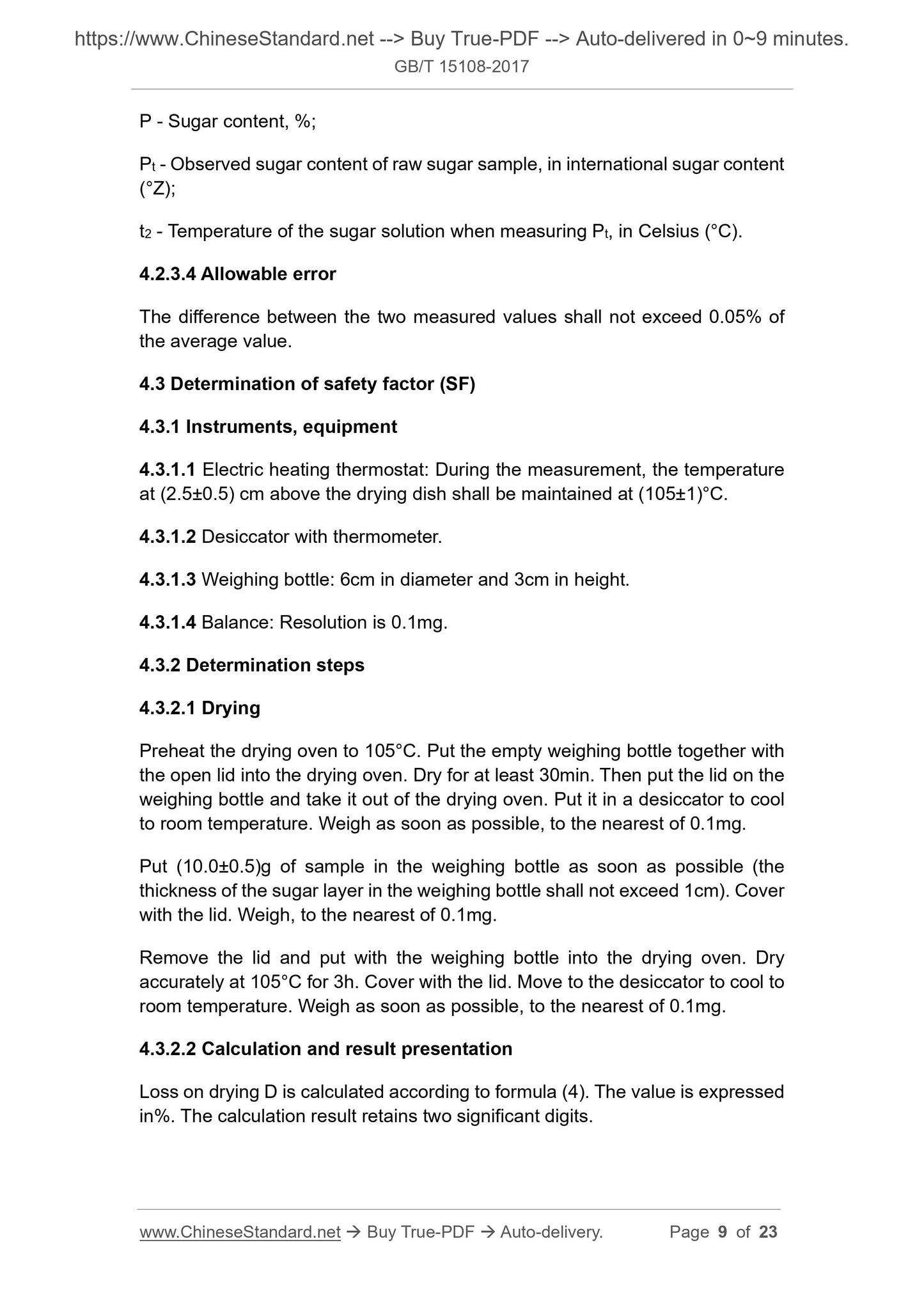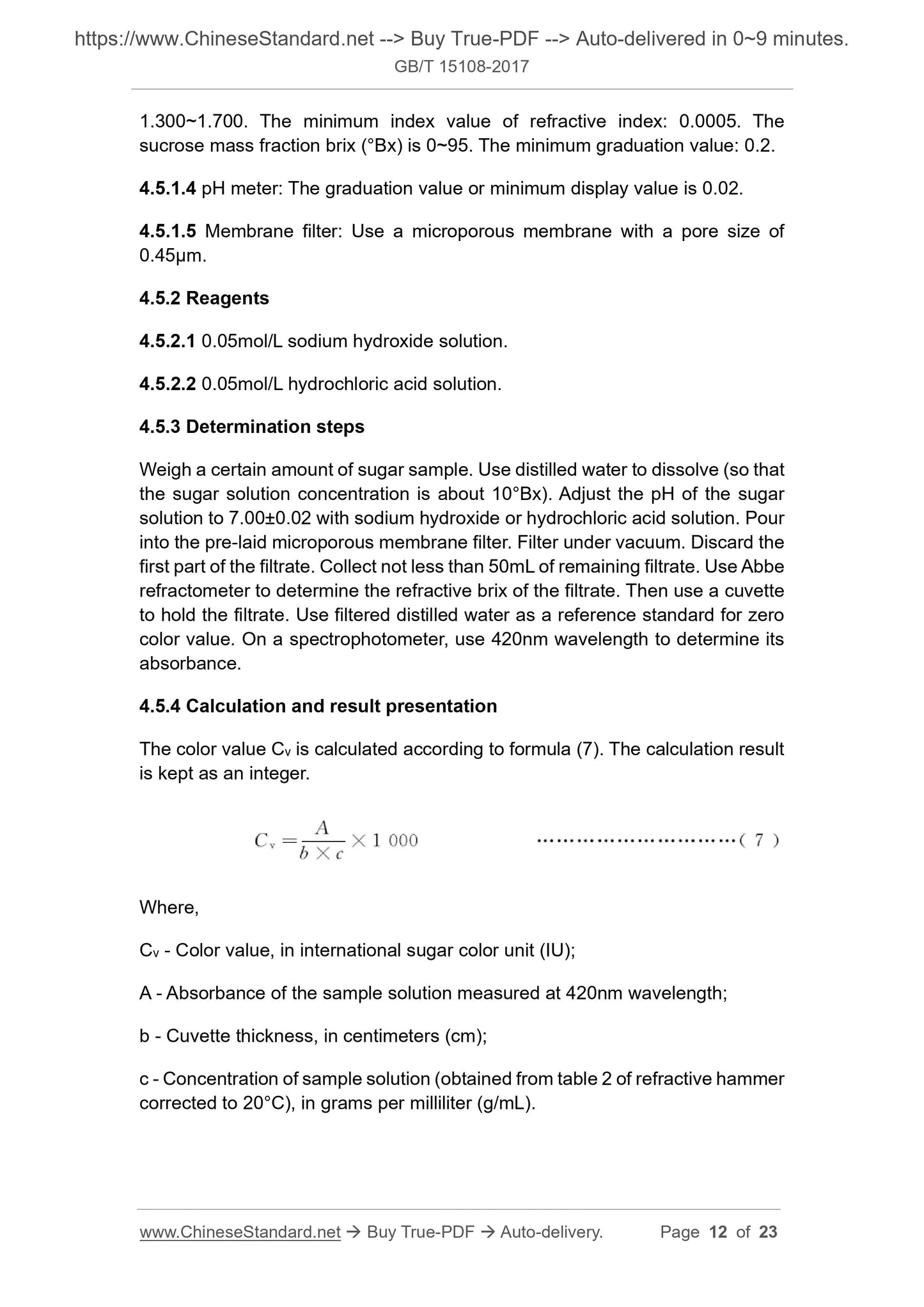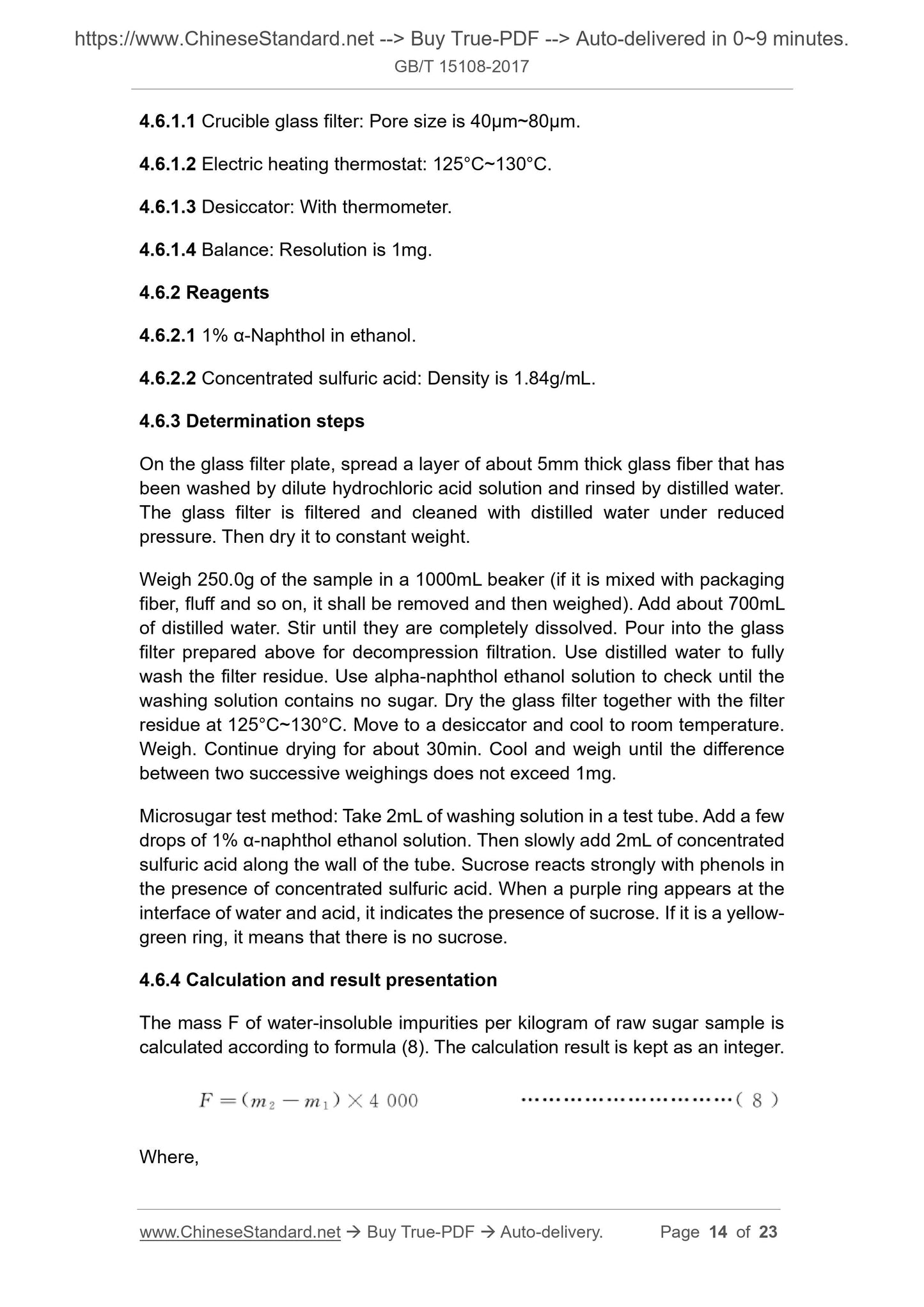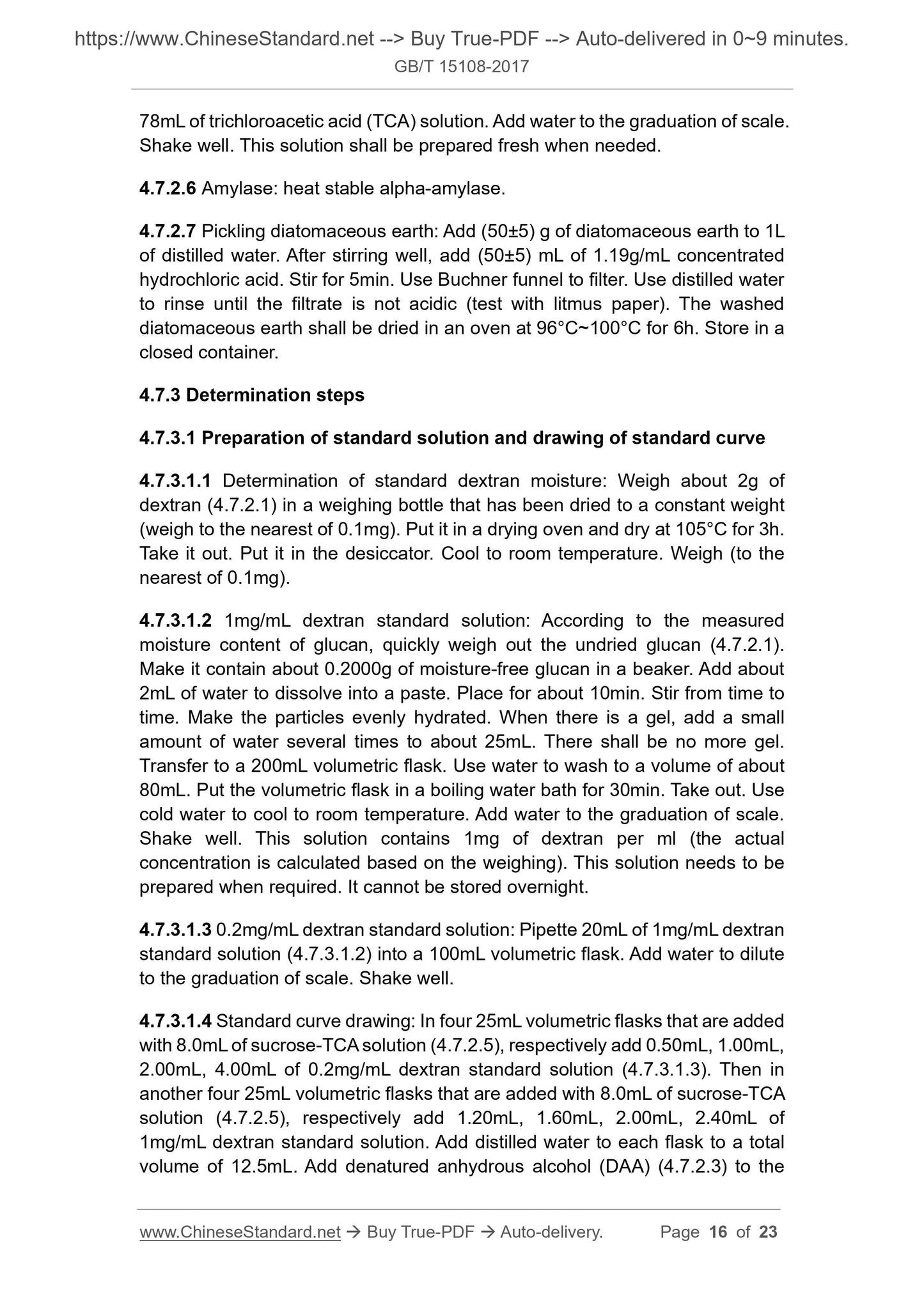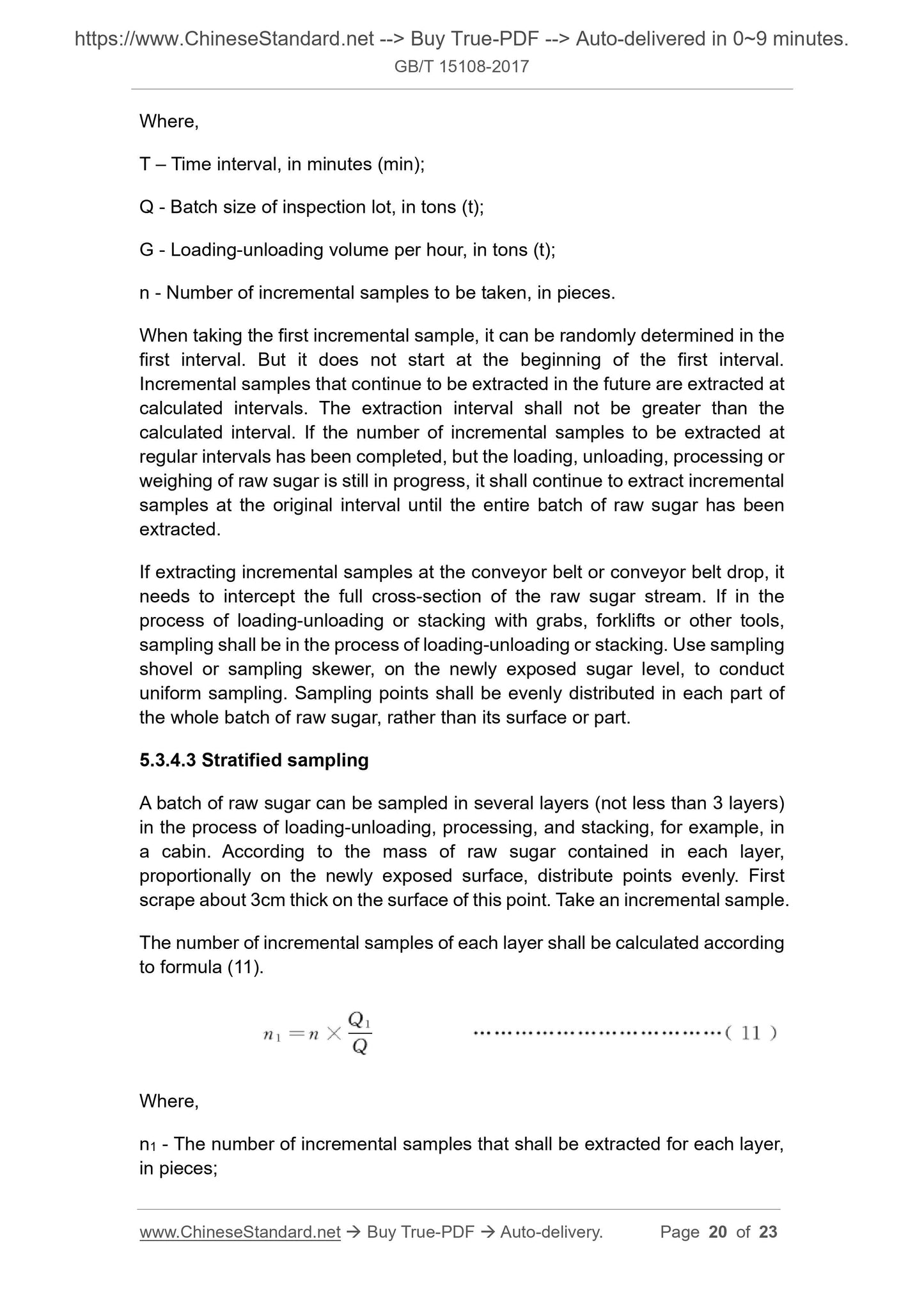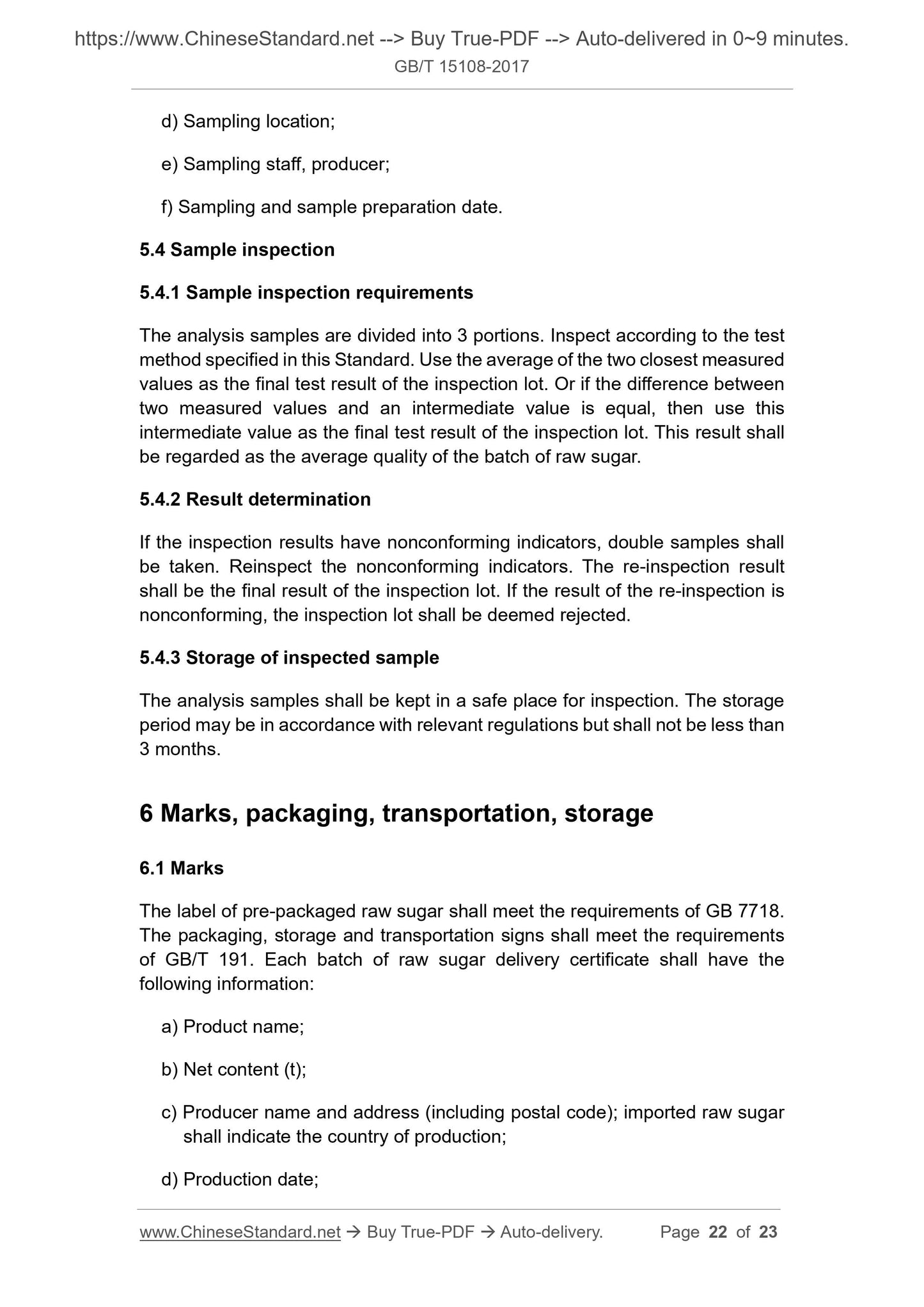1
/
of
10
www.ChineseStandard.us -- Field Test Asia Pte. Ltd.
GB/T 15108-2017 English PDF (GB/T15108-2017)
GB/T 15108-2017 English PDF (GB/T15108-2017)
Regular price
$210.00
Regular price
Sale price
$210.00
Unit price
/
per
Shipping calculated at checkout.
Couldn't load pickup availability
GB/T 15108-2017: Raw sugar
Delivery: 9 seconds. Download (and Email) true-PDF + Invoice.Get Quotation: Click GB/T 15108-2017 (Self-service in 1-minute)
Newer / historical versions: GB/T 15108-2017
Preview True-PDF
Scope
This Standard specifies requirements, test methods, inspection rules and marks,packaging, transportation, storage for raw sugar.
This Standard is applicable to cane sugar crystals with molasses made from
sugarcane juice after purification, smelting, and honey separation.
Basic Data
| Standard ID | GB/T 15108-2017 (GB/T15108-2017) |
| Description (Translated English) | Raw sugar |
| Sector / Industry | National Standard (Recommended) |
| Classification of Chinese Standard | X31 |
| Classification of International Standard | 67.180 |
| Word Count Estimation | 14,144 |
| Date of Issue | 2017-11-01 |
| Date of Implementation | 2018-05-01 |
| Older Standard (superseded by this standard) | GB/T 15108-2006 |
| Regulation (derived from) | National Standard Announcement 2017 No. 29 |
| Issuing agency(ies) | General Administration of Quality Supervision, Inspection and Quarantine of the People's Republic of China, Standardization Administration of the People's Republic of China |
Share
